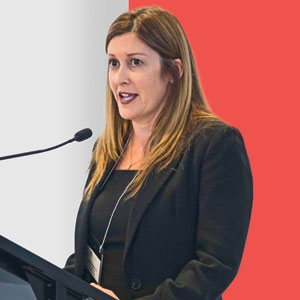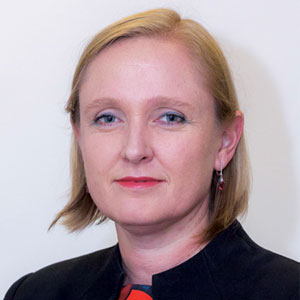THANK YOU FOR SUBSCRIBING

How Blockchain can be an Enabler for Digital Identity Verification
Cindy Nicholson, Director-Strategic Accounts Digital Innovation, Optus


Cindy Nicholson, Director-Strategic Accounts Digital Innovation, Optus
Most Australians hold a bank account and own a mobile phone, so at some point in time, would have undergone an identity verification process.
Cast your mind back to when you opened that account or took out that new telephone plan. You needed to provide documentation such as, at minimum, a driver’s license or a passport. Depending on level of risk, you may need to produce multiple pieces of identity artefacts to meet the criteria.
But if we look at the reason why this process of manual, physical documents was implemented, it was based on the need that ‘Trust’ was to be created between two parties who wanted to transact with each other. As the need for the trust grew, intermediaries such as institutions and governments became predominant authorised parties to issue vital certificates and documents and were seen as trusted entities.
Typical identification documents such as passports, visas, medicare cards, driver’s licenses were issued by government departments in a physical form. Why? Because, we were not living in a digital age then. The quality of data was not transparent to the citizen, yet it was trusted.
We would make an appointment to see a bank representative for example, fill in mounds of paperwork and give them our identity documents which would be taken away and photocopied before handing the original back to you.
Did you know who that person was that you just gave all your identity data to? Well, it didn’t matter because you trusted the institution.
Once you have handed over the copies of your identity information, the information would be sent somewhere else to be verified and eventually, you would get your account details and be able to access your new bank account.
Subsequent products and services you choose to procure are also subject to repetitive and/or additional documents and information to be provided before being approved.
This does not lend itself to a seamless, proactive and positive customer experience.
But then a couple of things started to happen.
Trust Erosion
The Global Financial Crisis eroded trust in the banking system to an all-time low, while taking regulation to an all-time high. The impact was also seen across Non-Government organisations, Media and Government.
The 2017 Edelman Trust Barometer polls more than 30,000 respondents in 28 developed and developing countries, who were asked to rank their levels of trust on institutions being Non- Government Organisations, Media, Business and Government, to do the right thing-to not trusting them at all. The results have shown a decline progressively over the last few years with around 2 percent decline across all areas in 2015 but the decline in trust is growing.
There were 10 key messages from that report which were driving this decline but the one that stood out in relation to ‘trust’ was “Peers highly credible “–for the first time, “a person like yourself” is as credible a source for information about a company, as a technical or academic expert has been in the past.
Trust is the New Currency
Trust is shifting from institutions to individuals. Look at AIRBNB, Uber, Ebay – trust is not achieved through physical documents issued by governments and institutions, but by reputation and peer to peer ratings.
With the internet of things we are already interchanging our physical and digital worlds and automating as much as we can as our expectations are shifting to everything on demand.
We need transport–we want it now, with a trusted driver / or passenger
We need accommodation–we want it now, from a trusted host / guest
We need an errand to be run–we want it now, from a trusted person
It is also expected that there will be up to 50 billion devices connected by 2020.
This will enable real time controls and decisions which will change the way we live our lives.
As our digital footprints increase we are no longer limited to paper forms to create Trust.
How can you, the consumer be at the centre of the controls to ensure relevant information is shared in real time with authorised recipients?
Institutions are able to support the transition by taking a customer experience view to servicing the customer in a frictionless manner
Identity related topics aligned to Blockchain are popping up everywhere we look these days. Why? Because as we bring together our physical and digital worlds, we need to be able to identify ourselves in both.
With any digital engagement that carries risk, there is a need for a level of identity verification. Getting the balance right between the consumer experience and risk management is the trick. So access to reputation and trust from the digital world, can be aligned with the physical world of trusted ‘sources of truth’ to create a holistic and enriched perspective on your persona.
As with everything, the transition will take place through evolution of technology and consumer adoption, so we need to be able to demonstrate value to citizens and organisations so they come on the journey together.
First and foremost, we can no longer rely on the ‘old methods’ of Identity Verification alone. It takes too long–its’ too expensive and too slow.
As we evolve, and transition, we still need the existing trust sources of truth to confirm the verification has been conducted and successfully completed in a manner known and trusted to both institutions and consumers alike, and to meet the existing AML/CFT Regulation requirements.
Institutions are able to support the transition by taking a Customer Experience view to servicing the customer in a frictionless manner. By adopting a reusable record of verification attributes, the institution can help to drive the adoption from consumers as a more seamless yet transparent process of verification.
Essentially, we need to shift the ownership of identity back to the individual to empower them to share relevant, verified attributes as/when required at their discretion.
Blockchain is not designed to replace old technology with a newer shinier version but to transform the way in which we connect and streamline processes to create Trust in a way we have never seen before.
As the adoption and use cases increase, the strength of both the Physical and Digital attributes can be integrated to create a higher level of trust.
Why BlockChain?
Because Blockchain does not require a centralised or intermediary authority to verify and validate transactions, Blockchain enables people who may not trust each other to interact directly with one another in a trusted framework.
The Blockchain limits identity fraud. Transactions are secure and protected and therefore, do not need to be monitored and overseen by another party.
But where are we today?
Blockchain is not mainstream but it is evolving very quickly.
As at 2015, over $190M of venture capital funds were invested to secure blockchain.
Blockchain has expanded from 100,000 accounts to over 3,500,000 users over two years of growth. Blocks are found approximately every 10 minutes.
The use cases for Identity on the Blockchain are being noticedand with the mobile device being the preferred device currently dominating our lives, accessibility can be made via this, and many other mobile channels.It offers a trusted method of streamlining services to consumers and accessing verified reusable attributes to remove the friction that is currently experienced.
Indeed, there are many proactive initiatives underway for example, the General Data Protection Regulation (GDPR) which is addressing ongoing challenges around data and regulation out of the European Union. This will affect 28 member states and will provide clear and prescriptive guidelines on how personal data can be used. It will come into play on 25th May 2018 and is designed to protect citizens and their rights.
Whilst the Blockchain might enable access to verified attributes in your digital world, the GDPR seeks to create a harmonized data protection law framework across the EU and aims to give citizens back the control of their personal data, whilst imposing strict rules on those hosting and ‘processing’ this data, anywhere in the world
The Regulation also introduces rules relating to the free movement of personal data within and outside the EU.
This indicative of things to come.
Given the extent to which the Blockchain operates, and the challenges for this to be hacked, along with the fact that no personal data is stored, creates a best of breed Trust platform. Australia has already commenced the journey of digital collaboration across the private and public sectors.
There are always a lot of questions around new technology, especially when the value of the asset is so great. However, Identity Verification on the Blockchain is being explored by many organisations. In Australia, we also have:
• A government with an Innovation agenda
• Regulators that are supportive (providing sandbox facilities and supporting initiatives)
• Some of the best Blockchain solutions in the world
• Followed by other countries as a best practise
But the risk is-we will be taken over? Australia has the opportunity right now to continue to make an impact on the global stage with all the right ingredients for success.
We can support institutions in streamlining services by enabling faster, cheaper and better on boarding capabilities.
Despite the pros and cons, blockchains are becoming an important piece of how we will all do business in the future.
The future belongs to those with a clear vision for their business in the digital age.












